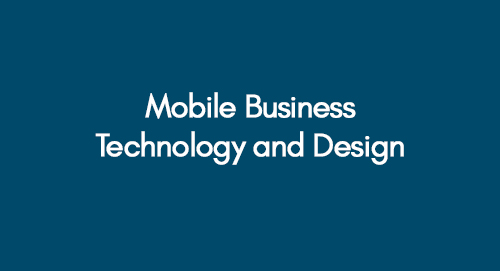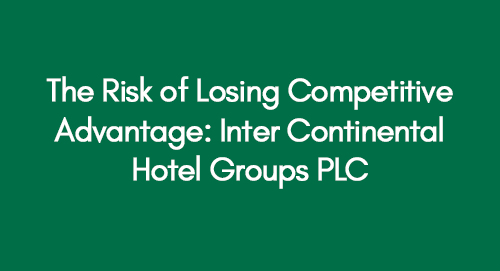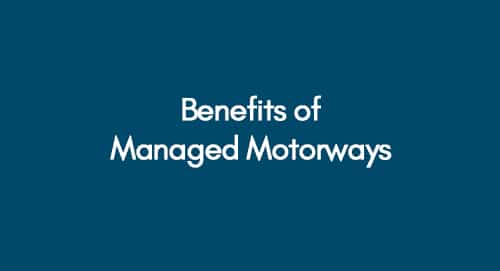
Mobile Business Technology and Design
June 15, 2022
Alternate Area of Nursing: Learning Disability
June 15, 2022Looking at the risk of losing a competitive edge for InterContinental Hotel Groups PLC is like checking how they stay ahead of other hotels. It's about understanding the things that might make them fall behind and how they can avoid that. According to IHG (2020a), InterContinental Hotel Groups plc (IHG) is a British hospitality company that has a presence all over the globe. It exists in many different countries under many different brands and aims to provide premium customer service.
IHG’s journey started in 1777 by William Bass under his name. As added by IHG (2020b), since then, the company has grown to become a multinational and gained a competitive advantage due to its size, reach, and market share. There are many other hotel and hospitality business that aims to take their competitive advantage from them. This report will explain the risk of losing competitive advantage for IHG and will further recommend strategies to tackle the risk.
About the Risk
According to David and David (2015), the business area where an organization does better than its competitors can be defined as its competitive advantage. The competitive advantage gives an edge to an organization over its competitors. Similarly stated by West, Ford, and Ibrahim (2015), with this edge, the organization enjoys gains as its competitors lack in that area of the business. Moreover, implementing software program strategies can also enhance the performance of an organization.
Explore the Advantages of Software Programs in Project Management
A competitive advantage is often a unique advantage that cannot be easily accessed or imitated by the competitors as it is beyond the competitor’s reach; this factor provides long-term benefits for organizations with competitive advantages. As per Kaleka and Morgan (2017), different types of competitive advantages exist for different organizations in different industries. An organization may have the advantage of having low operating costs, providing premium quality service, or charging low prices. Further contributed by Kumar and Pansari (2016), these competitive advantages help organizations outperform their competitors. An organization can have different strategies for having a competitive advantage. Two main strategies give a competitive advantage to one organization over the other.
1. Cost Leadership
According to the definition provided by Leonidou et al. (2015), a company risks losing its competitive advantage in cost leadership when it fails to reduce its operating costs effectively. In such cases, the company struggles to maintain market-competitive prices, and consequently, it may find itself earning less profit than its competitors despite having comparable revenues.
2. Differentiation Leadership
Pereira-Moliner et al. (2016) state that companies that follow differentiation leadership aim to provide premium services or products that are unmatchable by their competitors. Effective supply chain management in hotels enhances customer satisfaction, optimizes operational efficiency, and fosters competitive advantages through technology adoption, sustainable practices, and strategic market positioning. The services or products provided by these companies are of unique quality and provide unmatchable experiences to their customers. According to Leonidou et al. (2015), the prices of the products and services of these companies are high; however, by selling their products and services at economies of scale, these organizations hold their competitive advantages.
Analyzing products and implementing eco-redesign strategies in hotels not only enhances sustainability but also provides a distinctive competitive advantage, aligning with environmentally conscious consumer preferences and contributing to a positive brand image.
Products Analyses and Eco Redesign Strategy
Relevance of the Risk to the Industry and IHG
As stated by IHG (2012), InterContinental Hotel Groups plc operates in the hospitality and hotels industry and has gained a competitive advantage over its competitors due to its premium quality service and reach over different markets in different countries. However, as per MarketWatch (2020), many other companies operate in the same industry with a similar competitive advantage that threatens their market share. Many other hotels, such as Hyatt, Marriott International, Hilton, and more, are also present all over the globe and provide quality service to their customers. As stated by ARC (2019), due to the presence of these competitors, the differentiating factor that gave a competitive advantage to IHG is diminishing as there is not much difference left in the quality of service provided by IHG and other hotels. Further added by MarketWatch (2020), in the current context of the world hospitality market, many multinational hotels provide premium services to their customers, preventing IHG from dominating the market. Effectively managing resources in hospitality and tourism is paramount for hotels, fostering a competitive advantage through optimized operations, enhanced guest experiences, and cost efficiencies. Further added by ARC (2019), the competitive advantage that the company holds due to its big size and high quality is losing its importance as many other hotels are fighting with a similar competitive advantage. From the perspective of the North American region, IHG is not present in the top five competitors of the industry.
Risk Treatment Strategies
IHG is still a major entity in the global hotel and hospitality business (MarketWatch, 2020). There are certain strategies the company can take to dominate the market. As per the three lines of defence framework, the following are the recommendations for the InterContinental Hotel Groups plc.
| Line of Defence | 1st Line of Defence | 2nd Line of Defence | 3rd Line of Defence |
| Role | Front Line Management | Risk Management and Compliance | Internal Audit |
| People Involved | Marketing and Sales Department | Senior Management | Directors and Owners |
| Action | Diminishing Competitive Advantage | No Differentiating Factor | Innovation |
a. 1st Line of Defence
The marketing and sales department of the IHG will be responsible for realizing that the company does not have a decisive competitive advantage. As discussed above, the competitive advantage differentiates an organization and makes its product or service unique. Since IHG has nothing unique that separates it from its competitors, the marketing and sales departments that attract customers to the company by presenting its advantage will notice the need and inform upper management.
b. 2nd Line of Defence
The upper management will be responsible for deciphering what is required for the company and how to tackle the risk. For the upper management of IHG, the role will be to realize that their company do not have a differentiating factor that makes its service unique. After deciphering the need, the senior manager will be responsible for further transferring their knowledge to the directors; thus, the needed action can be taken.
c. 3rd Line of Defence
Finally, an internal audit is to be conducted where the directors of IHG will make a decisive plan to tackle the issue. They must agree on bringing innovation to their business to help them regain their competitive advantage and make their service unique and different from their competitors. Innovation could be in the form of expanding to new markets, adding new facilities in its services, and more. Implementing marketing innovation catalyzes for businesses to gain a competitive advantage by tapping into emerging trends, engaging diverse audiences, and staying ahead in dynamic markets.
Conclusion
InterContinental Hotel Group plc is a widely known hotel and hospitality company that has been operating for a few centuries. The brand provides premium quality service and has its quality as a competitive advantage. However, many other hotel and hospitality brands are providing premium quality services globally, which has rendered the competitive advantage of IHG to insignificance. The company must follow the three-line strategy to regain its competitive advantage and dominate the global market.
References
ARC, 2019. Luxury Hotel Market Analysis 2019 By Size, Share, Trends, Segmentation And Vendors, Industry. [online] Medium. Available at: <https://medium.com/@arcognizance/luxury-hotel-market-analysis-2019-by-size-share-trends-segmentation-and-vendors-industry-e7515a5940bf> [Accessed 2 May 2020].
David, F. and David, F.R., 2016. Strategic management: A competitive advantage approach, concepts and cases. Pearson–Prentice Hall.
IHG, 2012. [online] Ihgplc.com. Available at: <https://www.ihgplc.com/files/reports/ar2012/docs/IHG_Review_How_we_win.pdf> [Accessed 2 May 2020].
IHG, 2020a. Our History. [online] InterContinental Hotels Group PLC. Available at: <https://www.ihgplc.com/en/about-us/our-history> [Accessed 2 May 2020].
IHG, 2020b. [online] Ihgplc.com. Available at: <https://www.ihgplc.com/-/media/ihg/files/results/2020/our-global-presence.pdf?la=en&hash=027FF24DD7CEF07B8684B23BE38B5818> [Accessed 2 May 2020].
Kaleka, A. and Morgan, N.A., 2017. Which competitive advantage (s)? Competitive advantage–Market performance relationships in international markets. Journal of International Marketing, 25(4), pp.25-49.
Kumar, V. and Pansari, A., 2016. Competitive advantage through engagement. Journal of marketing research, 53(4), pp.497-514.
Leonidou, L.C., Fotiadis, T.A., Christodoulides, P., Spyropoulou, S. and Katsikeas, C.S., 2015. Environmentally friendly export business strategy: Its determinants and effects on competitive advantage and performance. International Business Review, 24(5), pp.798-811.
MarketWatch, 2020. Luxury Hotel Market Trends 2019 Global Industry Size, Share, Growth, Demand, Top Players, Opportunities And Forecast To 2025. [online] MarketWatch. Available at: <https://www.marketwatch.com/press-release/luxury-hotel-market-trends-2019-global-industry-size-share-growth-demand-top-players-opportunities-and-forecast-to-2025-2020-03-06> [Accessed 2 May 2020].
Pereira-Moliner, J., Pertusa-Ortega, E.M., Tarí, J.J., López-Gamero, M.D. and Molina-Azorin, J.F., 2016. Organizational design, quality management and competitive advantage in hotels. International Journal of Contemporary Hospitality Management.
West, D.C., Ford, J. and Ibrahim, E., 2015. Strategic marketing: creating competitive advantage. Oxford University Press, USA.
Get 3+ Free Dissertation Topics within 24 hours?




























